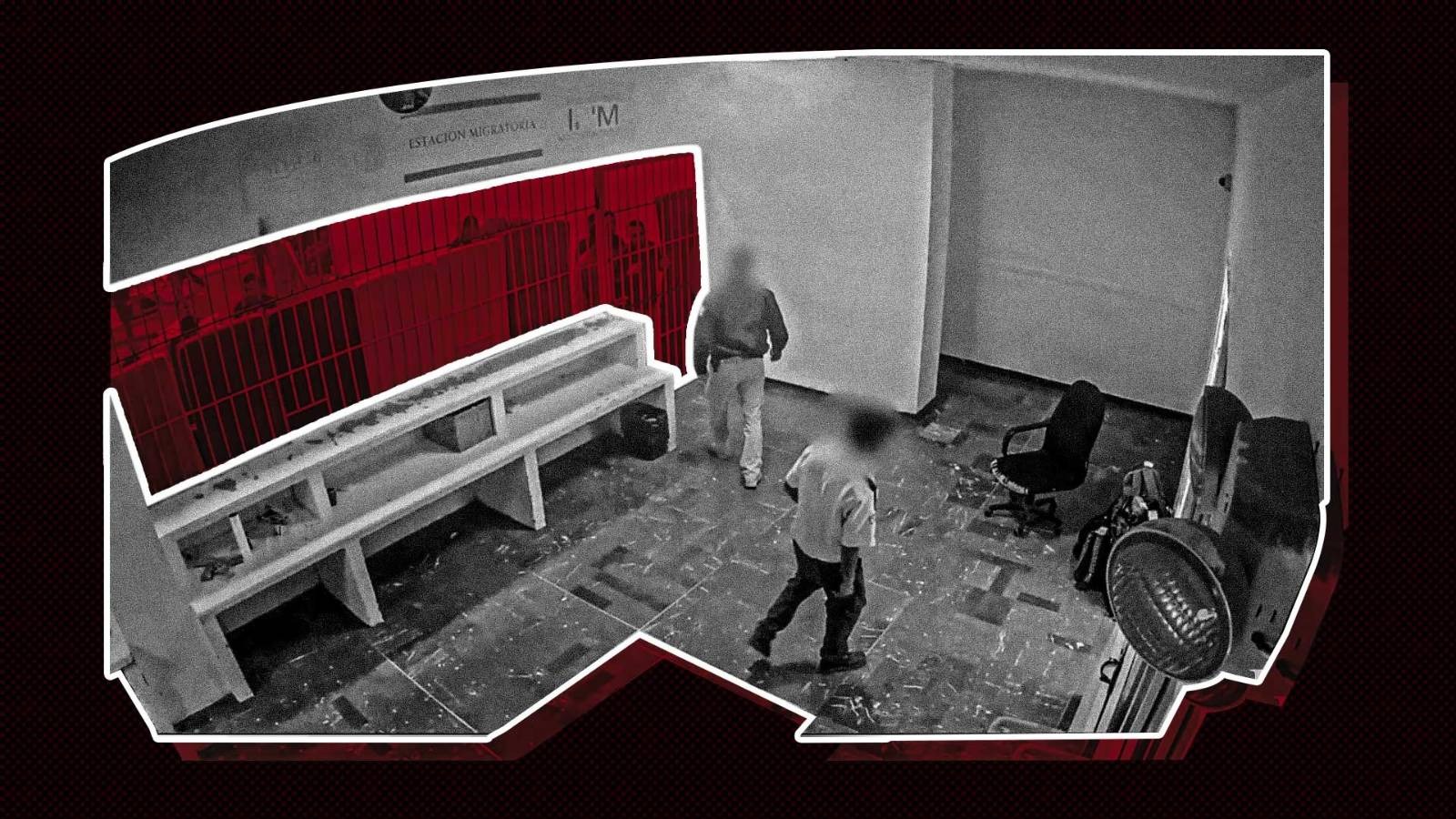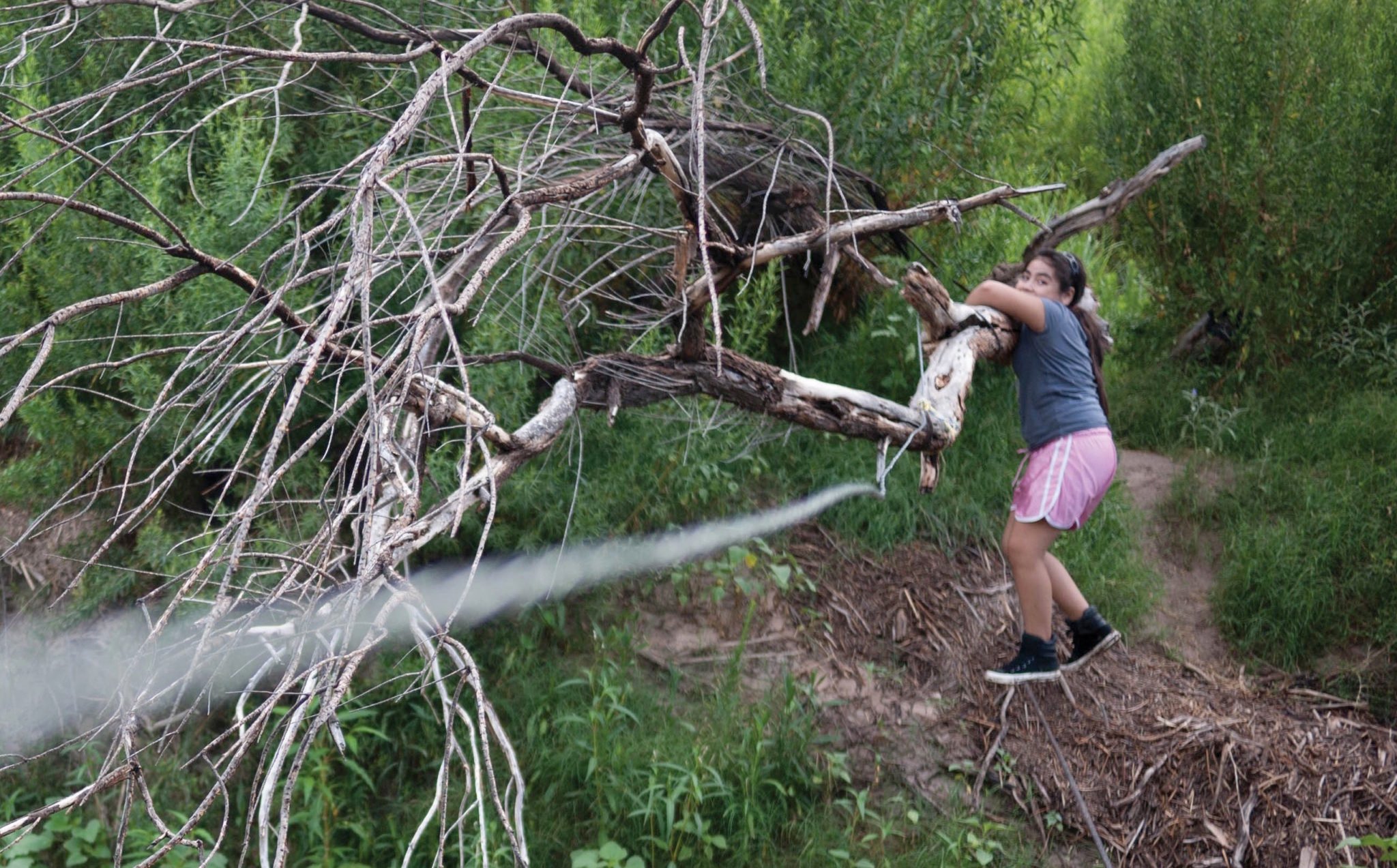
Crossing Over
For families living on both sides of the U.S.-Mexico border, breaching the divide is a way of life.
A version of this story ran in the October 2016 issue.
“Are you a good swimmer?” Clarisa asks me as we stand on the Mexican side of the Rio Grande and watch the swiftly moving water, murky with sediment. We’re trying to cross from the tiny village of San Antonio del Bravo to Candelaria, an equally small town on the other side of the river in Texas.
Just a day earlier, when we crossed the other way — from Candelaria to San Antonio del Bravo — the riverbed was so dry we could walk across without getting our feet wet. Then a wild desert monsoon blew in, transforming the arid landscape of the Chihuahuan desert. Within minutes, there were thigh-deep puddles in the path along the river. Now the current could easily divert even the best of swimmers.
Clarisa’s grandmother, who goes by Abuela, stares at the water, then begins walking, the 11-year-old and I following on her heels. “Where are we going?” I ask Clarisa, who, as my translator on this trip, relays the question to her grandmother. Abuela mumbles a quick response in Spanish, and Clarisa, looking at me wide-eyed, says, “We’re going to the cables.”
My heart skips a beat; I know about the cables. We’d gone to see them the day before. Abuela had led me along a verdant path that ended at the river’s very edge. There, two steel cables hung like vines across the river. “The top one is for your hands,” Abuela had told me. “The bottom is for your feet.”
The cables had been secured precariously to parts of a dead, crumbling tree on the U.S. side and stretched unevenly to live branches on the Mexican side. The top line hung several feet higher than the bottom, and another couple of feet in front of it. To cross, you have to put your feet on the bottom line, lean forward over the river to grasp the top line, then sidle along. It looked treacherous.
“The same cables we went to yesterday?” I ask nervously. “She’s going to try to find better cables,” Clarisa responds.
A month before, there was a better, more stable set of cables for crossing the river, but it was taken down, presumably by Border Patrol, whose job is to thwart illegal crossings. In fact, the undocumented and Border Patrol play a kind of cat-and-mouse game with the cables; they’re put up, taken down, then put up again. It’s a measure of the undocumented residents’ determination to cross — their lack of recognition that the border is a real divide between families who have lived on both sides for generations. Years ago, there was an actual footbridge connecting San Antonio and Candelaria. It was taken down in 2008 as part of an attempt to tighten border security, and the game has been played ever since.
For more than an hour, we trace the course of the river looking for safer cables. We crouch beneath thick mesquite with thorns that catch our clothes and score the skin beneath. We never find any other cables, but as we walk, we come upon the ones we saw the day before. I am shocked to see two men crossing them. Not only are they managing to balance on the unsteady wires, they’re transporting supplies. One of them, a middle-aged man in a cowboy hat and jeans, is walking the bottom line with the poise of a tightrope walker, placing one foot in front of the other, his spurs clanking lightly with each step. He holds the top line with his left hand, and with his right, he balances two empty gas cans on his shoulder. Once he’s almost on the Texas side, he stops and turns. “Come on,” he says to me, smiling to reveal a set of small brown teeth.
I’m afraid to try his high-wire act, more intimidating than any balance beam routine I’ve attempted. But turning back to San Antonio is not an option. The people I’ve told about this trip, who know of my plans to cross the border with Abuela and Clarisa, are expecting me to return that day. I turn to them, and Abuela lets me know she and Clarisa won’t cross; they’ll wait for the water to recede. “OK,” I say, casting a final, imploring look at Abuela. “Adios.”
In fact, the undocumented and Border Patrol play a kind of cat-and-mouse game.
The town is like a remote, isolated colony, a community defined by the everyday crossing between two countries. Its population is so small that it doesn’t register on the U.S. Census. A single dirt road runs the length of the town, bordered by dilapidated homes, a small church and an old schoolhouse. There’s no health clinic, not even a store. The nearest city, the border town of Presidio, is a 50-mile drive on a snaking two-lane highway. On a map, Candelaria is the end point of a county road, and it seems to embody its cartographic designation. Candelaria feels like an ending, and not a happy one.
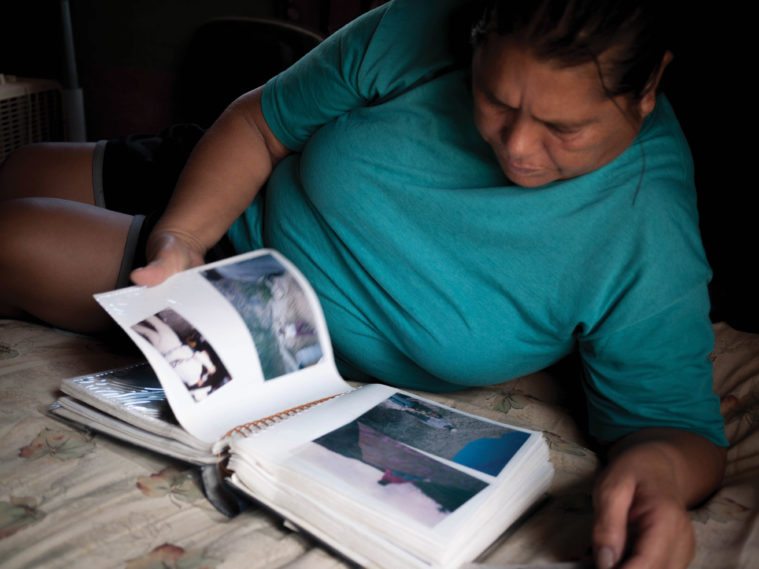
The footbridge that once connected Candelaria and San Antonio was an unofficial border crossing, quietly tolerated by Border Patrol even after it lost its status as a Class B entry point following the 1996 tightening of security measures. People had crossed relatively freely over the footbridge, moving between the towns to visit family, buy supplies from the handful of bodegas in San Antonio, and use its health clinic. The bridge’s removal in 2008 was a belated response to post-9/11 intensification of border security.
“There are significant, daily penalties for maintaining an unapproved bridge across an international boundary,” said Bill Brooks, a spokesperson for the Big Bend section of U.S. Customs and Border Protection (CBP), which covers 500 miles of Texas’ southwest border and includes Candelaria. “The Candelaria bridge was in violation of those laws.”
Now, if you want to get from Candelaria to San Antonio using the official border crossing in Presidio, you have to drive an hour to the city and cross into Ojinaga in Mexico. Then you have to drive along dirt roads for another four hours to reach San Antonio. Meanwhile, the illegal route — across the river by whatever means — is no more than a mile.
Other times, she crossed by skipping along the tops of train cars stalled along the railway that used to run from Ojinaga to Presidio.
Not that a lot of people drive the road, anyway. Candelaria residents, including the few who own cars, seldom leave their homes for fear of apprehension by la migra, the Border Patrol agents whose white trucks are unmistakably marked with a thick band of green. You’d also be hard-pressed to find Candelaria residents at the general store in Ruidosa, about 10 miles away, where Border Patrol agents are frequently sighted.
In fact, Candelaria is eerily silent — active, generally, only when the West Texas Food Bank makes its monthly delivery of food baskets, or when the Family Crisis Center of the Big Bend, which provides shelter and services to victims of domestic violence, brings clothes and food.
James Torres, an outreach coordinator for the food bank, said they serve about 50 families in Candelaria — a majority of the residents. “They really rely on it, everything we take, it all goes away,” Torres said. “They’re really in need of food. Most of their husbands are out there in the fields.” Here, he added, “a lot of the women are just stuck.”
Sitting with Abuela’s family in their San Antonio house, I’m viscerally aware that I am an outsider and, therefore, a threat.
“Ninety-five percent,” answered one woman, her arms folded defensively across her chest.
Other women looked uneasy, and when I continued to pry, some rose from their seats and walked out the door.
But while fear of la migra may keep Candelaria residents from shopping, it doesn’t stop them from crossing the river. According to the Big Bend sector of CBP, the total number of “illegal alien apprehensions,” an indicator of the number of illegal crossings, has dropped by more than half since 2001, from about 12,000 to about 5,000. But agents on the ground paint a more nuanced picture, at least when it comes to crossing between Candelaria and San Antonio.
“There’s people crossing every day there,” said Ryne Roulo, who retired from CBP’s Big Bend immigration policy, believing that undocumented immigrants are exploiting resources that should be reserved for U.S. citizens. Still, he doesn’t see border security as a panacea.
“What we found was continual traffic,” he continued. “It wasn’t just one or two tracks. The amount of tracks was… you couldn’t even count how much. They obviously have that communal link between the two towns. They make continual round trips between Candelaria and San Antonio del Bravo.” Roulo resigned from his post earlier this year because of what he described as mismanagement of his station and inadequate resources and staff.
At 56, Abuela has crossed back and forth across the border illegally too many times to count. Most Candelaria residents have longstanding ties across the river — children, parents, spouses, nieces and nephews in sprawling, bicultural families. Abuela, for example, spends most of her time living in Candelaria with her daughters and Clarisa; one of her daughters and Clarisa are U.S. citizens, and they attend school in Presidio. But she crosses over to San Antonio frequently, because her husband and son live there. Many people in Candelaria view the two towns as one, with a river running through it.
The interconnectedness is evident to Border Patrol agents, who see signs that entire families, not just individuals, regularly cross the river. “When we would go down there, we would see smaller footprints that would indicate children going back and forth,” Roulo said. “They go into town and come right back. But they’re still breaking the law. It’s still illegal to cross in that manner.
“I know there is an unbreakable bond between bloodlines,” he continued. “However, that’s the line that has been drawn and that’s what needs to be followed. In my opinion, it’s black and white. You’ve crossed that line and there’s a punishment.”
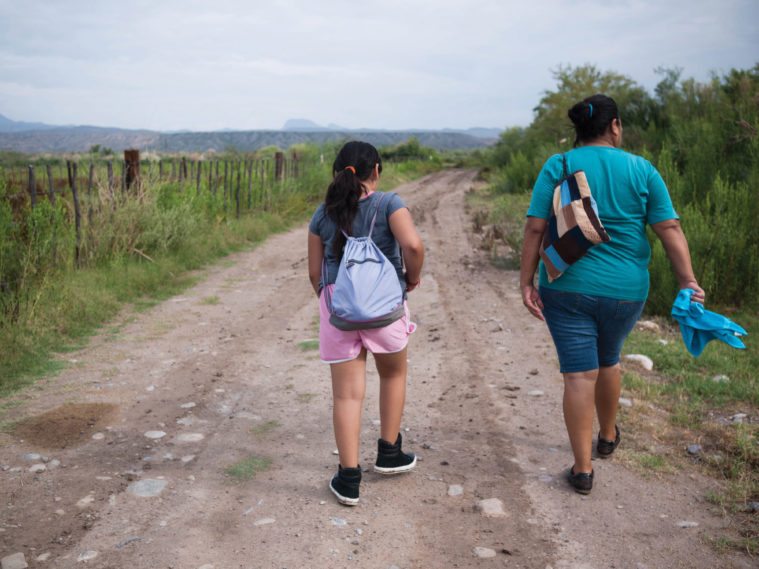
The first time Abuela crossed illegally into the United States, she was 11. By then, she and her 11 siblings had been fending for themselves for years. Her mother died when she was an infant, and her father abandoned the children. With a sister living in Presidio, Abuela discovered that work was better-paid in the United States; in her town, Ojinaga, she received plates of food in exchange for doing chores for her neighbors, and she collected fistfuls of change by begging on the streets.
Sometimes she crossed clandestinely into the United States using the Port of Entry bridge in Presidio; back then, in the early ’70s, it was patrolled less regularly, and she could slip across unnoticed. Other times, she crossed by skipping along the tops of train cars stalled along the railway that used to run from Ojinaga to Presidio.
“The train wasn’t moving — the cars were parked on the tracks,” she said. “Me, my sister and my niece would jump from one car to the next. On the Presidio side, someone would wait to give us a hand.” Then, as an afterthought, she said, “It was scary.”
Abuela’s life story includes the death of two sons and unrelenting poverty, and she has time to get only halfway through it while we sit in her adobe home in Candelaria. She tells the rest after we have crossed the river and arrived at her husband’s house in San Antonio; a soft-spoken man, he opens the door smiling and kisses Abuela lightly on the cheek. In a way, her fragmentary narration is as meaningful as the content. Hers is a story of a lifetime spent straddling the border.
Abuela wears her black hair in a tight bun, and when she lets it down, it falls to her waist in soft curls, like a shadow against her side.
Once we have crossed from Candelaria to San Antonio, she beckons me to follow her into the yard at her house. She spills out a bucket filled with rocks onto a table. She washes each stone in another bucket filled with water, rubbing her thumb along the etchings that reveal fossils, which she’s collected for years. Her hands are thick, dark and lined from years of outdoor labor.
But when dark clouds gather, Abuela’s short-lived whimsy dissipates. She says that if we’re to return to Calendaria that day, we need to get to the river before the storm breaks. We hurry to pack our things, but the moment we step outside, thick, warm raindrops pelt the ground. Minutes later, the rainfall has filled a gully, and Clarisa grabs my hand and begs me to play.
We walk in muddy flip-flops to its edge. “Do you want to cross?” she asks, tightly holding my hand. “Sure,” I say, even though I really don’t. The water is cold and fast-moving, and it carries bits of debris. When we walk into it, we sway with its strong current, the muddy bottom sucking at our feet. Clarisa cries out as we reach the middle, its deepest point, where her pink shorts are submerged.
We inch our way to the other side and step awkwardly ashore. Clarisa points to a drowned bird. Kneeling in the dirt, she digs a shallow grave and places the bird in it. She covers it up and makes the sign of the cross.
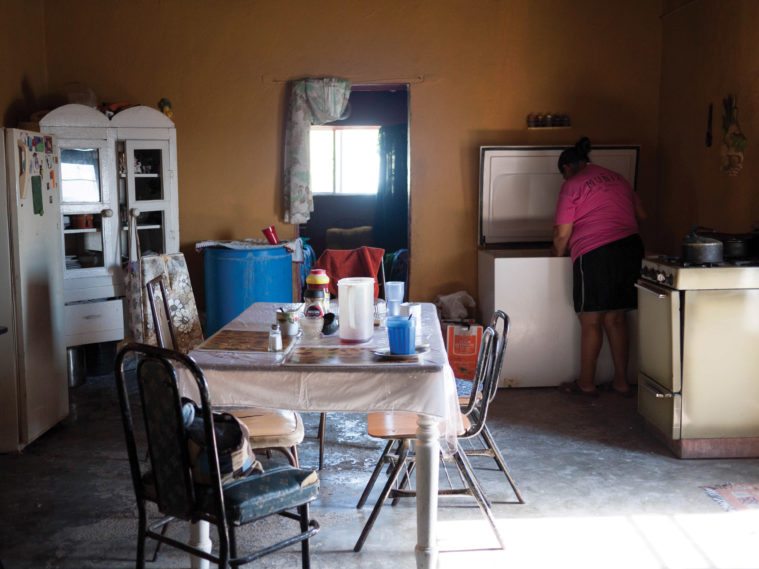
In the Chihuahuan Desert, water breathes life into the inhospitable terrain. A single storm can transform the seemingly infertile landscape into one buzzing with vitality. But the politics of the border have turned this wellspring into a much darker force. The river not only divides Mexico from the United States, it also kills and injures, as people take increasingly risky measures to cross it.
Two years after all Class B ports were closed in 1996, including the footbridge connecting Candelaria and San Antonio, the Border Patrol began to keep a record of all migrant deaths along the southwest border. Recorded “border deaths” nearly doubled from 263 in 1998 to 492 in 2005. In 2009, the ACLU issued a report on migrant deaths at the U.S.–Mexico border, calling them a humanitarian crisis.
Citing the tightened border policy that led to the closure of Class B ports, the ACLU report stated, “The strategy concentrated border agents and resources along populated areas, intentionally forcing undocumented immigrants to extreme environments and natural barriers that the government anticipated would increase the likelihood of injury and death.”
The ACLU also points out that the Border Patrol’s record of migrant deaths doesn’t include people whose bodies turn up on the Mexican side of the border. The organization, which compiles data from news reports and Mexico’s Ministry of Foreign Affairs, says the real number could be 100 or more higher than the Border Patrol’s figures.
At the potluck lunch held in Candelaria, one Amazon of a woman told the roomful of laughing Candelaria residents about the time she took a fall while crossing via cables. She managed to swim to shore, but not all people are as lucky. In 2015, news sites reported a rash of drownings in Border Patrol’s Rio Grande Valley region — a total of 16 in six months.
Since Border Patrol began documenting the number of migrant deaths, the border death toll has dipped to as low as 240, the number recorded last year. But for Candelaria residents, crossing the river is still an everyday risk that could get them physically hurt or apprehended. It’s difficult for them to trust people who are not, like them, skirting legality when they shop or visit family.
Sitting with Abuela’s family in their San Antonio house, I’m viscerally aware that I am an outsider and, therefore, a threat. She and her family remind me multiple times not to tell anyone in San Antonio or Candelaria that I am a journalist who’s been allowed to peek into the clandestine part of their lives.
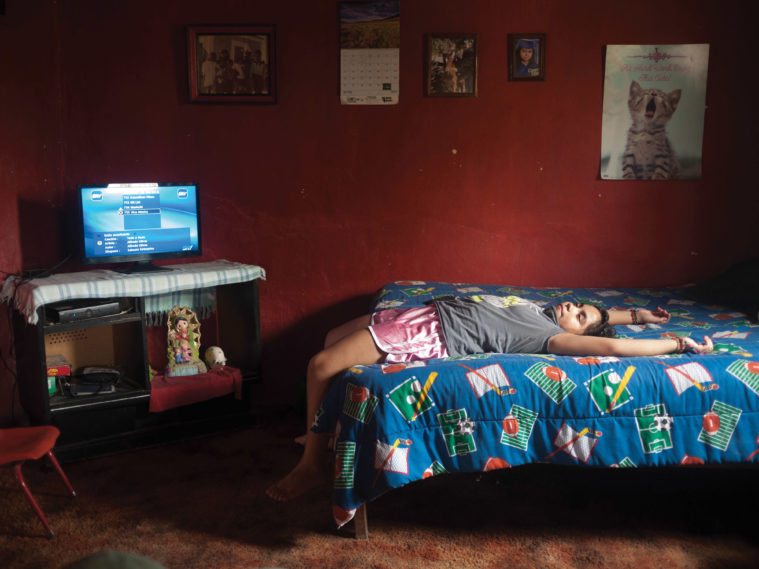
At one point, as we prepare lunch in the kitchen, Abuela and her daughter — Clarisa’s mother — get into a shouting match because Abuela invited me into their home. I can’t understand much of what they say, only that I am not to be trusted. Finally, Abuela physically removes herself from the argument. Forgoing lunch with her family, she sits before the TV in the living room. When I join her there, she turns to me: “Vamos.” We pack our things and head to the river.
“Don’t look down!” Clarisa yells. My body lurches as I drag my gaze off the river rushing below my feet. The cable quivers and I edge inch by inch across the river. I am trembling with adrenaline but my mind is clear as a bell. I think of my car parked at Abuela’s house in Candelaria. I think of my house 50 miles away in Presidio. If I make it across, the first thing I’ll do when I get there is take a shower.
I continue side-stepping, never looking down until my feet touch land. As I step off and into Texas, I look across the river at Abuela. She gives me a rare grin, then lifts her hand, connecting finger and thumb in the universal gesture for OK. For the first time, I understand her perfectly.

